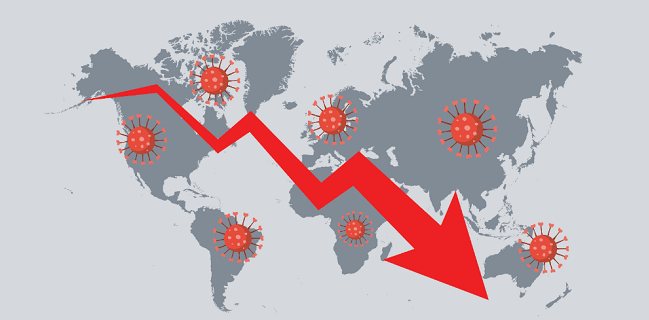Worldwide Drop in STEMI During COVID-19, ESC Survey Confirms
To gain patient trust again in hospitals, Barbara Casadei said testing and isolating COVID-19 patients will be paramount.

Across the globe, STEMI admissions have fallen and cardiology departments have been systematically restructured to deal with the COVID-19 pandemic, confirms an international survey of physicians and nurses conducted by the European Society of Cardiology (ESC).
Previous registry data have indicated a drop in patients with ACS coming to the hospital, including a 38% decrease for STEMIs in the United States and 48.4% for all acute MI in Italy. Experts say patients lost confidence in hospital safety and stayed home despite symptoms, and that this is mostly to blame for the patterns seen, as well as an uptick in late STEMI presentations.

“I hope that a second pandemic wave will not happen, but you need to be prepared and you need to be prepared for other pandemic waves and other things that can happen,” senior author and ESC President Barbara Casadei, MD, DPhil (University of Oxford, England), told TCTMD. “The saddest thing would be not to learn from this. We really need to take stock of what has happened, what can be prevented, and really not make the same mistakes.”
For the survey, published late last month in the European Heart Journal - Quality of Care and Clinical Outcomes, Casadei along with Guilherme Pessoa-Amorim, MD (University of Oxford, England), and colleagues polled 186,000 physicians and nurses regarding their experiences during the pandemic. From April 16 to 26, 2020, 3,101 respondents from 141 countries (58% from Europe) replied.
Just over half (56.3%) defined themselves as cardiologists, 33.6% as interventional cardiologists, and 10.1% as nurses or population scientists. In total, 88.3% of respondents said their country was in “total lockdown” and 7.1% in “partial lockdown.”
The saddest thing would be not to learn from this. We really need to take stock of what has happened, what can be prevented, and really not make the same mistakes. Barbara Casadei
While 31.8% of respondents said their department had undergone no restructuring due to the pandemic, 54.9% and 13.3%, respectively, said their departments underwent a partial or total restructuring to deal with the influx of patients infected with the virus. About one-quarter said there were more than 100 COVID-19 patients admitted to their hospital.
In multivariate analysis, respondents reporting late STEMI presentations outside the optimal reperfusion window were more likely to be from countries with total lockdowns, working in a hospital with more than 100 COVID-19 cases, and at a center with a restructured cardiology service.
Globalized Society, Insular Reactions
Notably, said Casadei, the survey results were largely homogenous across the globe. “It has happened everywhere, and it must be some kind of fundamental reaction,” she said. “I am not a psychologist, but there must be something here that has kept people away from hospitals. It is difficult to imagine someone nursing a STEMI at home, and yet it seems to have happened.”
In terms of rebuilding the trust for patients that hospitals are safe places for them to go when needed, Casadei said the healthcare community has work to do. “In many places, there was not even an attempt or possibility to do point-of-care testing, so nobody knew whether the patients or the care providers were positive,” she said. “The idea that nobody knew who was infected unless they were really ill . . . must have had an impact.”
Hospitals will need to ensure that they can separate patients with COVID-19 from those without, Casadei added, and to provide adequate testing for both patients and personnel before “you can tell people that we are at least as safe as a trip to the supermarket.”
Additionally, the healthcare community will “need to be very explicit” in terms of communicating infection and mortality rates going forward, she said. “Now that we have better data and testing can be more widespread, we can have a sense of how many people have been infected and how many people died. Already we know that the risk [from COVID-19] is lower than the risk of a STEMI at home.”
Casadei said she thinks individual countries and regions could have done more to learn from other parts of the globe, rather than trying to forge their own responses. “For instance, what really is to some extent infuriating is that China already had SARS; so the moment that they realized that they had another SARS, they could have acted very quickly because they had learned from a previous experience,” she said. “But we didn't really internalize the problem in the same way. Because we hadn't had the SARS before, the lesson of other people was somehow not applied to us. We could have learned from that, and we could have done exactly the same.”
Yael L. Maxwell is Senior Medical Journalist for TCTMD and Section Editor of TCTMD's Fellows Forum. She served as the inaugural…
Read Full BioSources
Pessoa-Amorim G, Camm CF, Gajendragadkar P, et al. Admission of patients with STEMI since the outbreak of the COVID-19 pandemic: a survey by the European Society of Cardiology. Eur Heart J Qual Care Clin Outcomes. 2020;Epub ahead of print.
Disclosures
- Casadei is in receipt of a personal chair from the British Heart Foundation, is the current President of the ESC, and has received in-kind research support by Roche Diagnostics and iRhythm unrelated to this work.
- Pessoa-Amorim reports no relevant conflicts of interest.


Comments